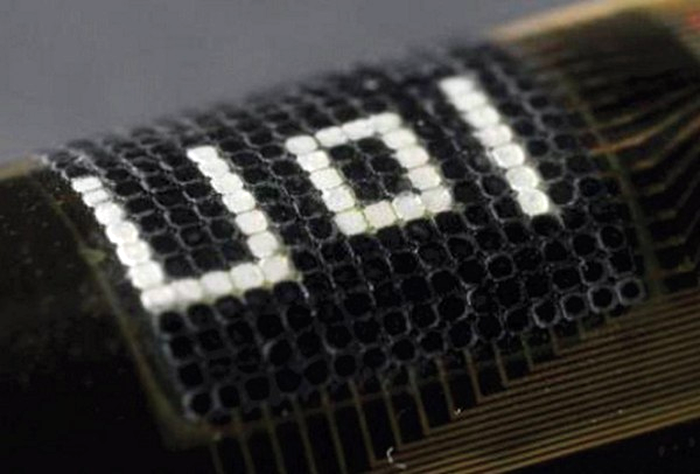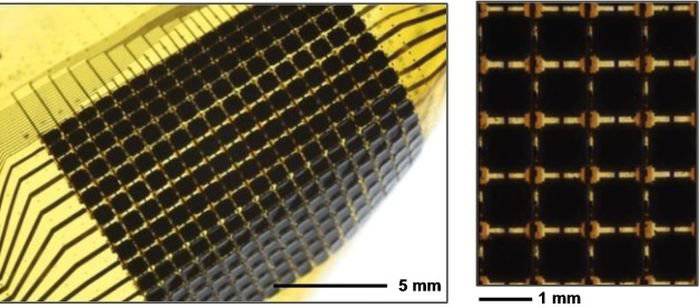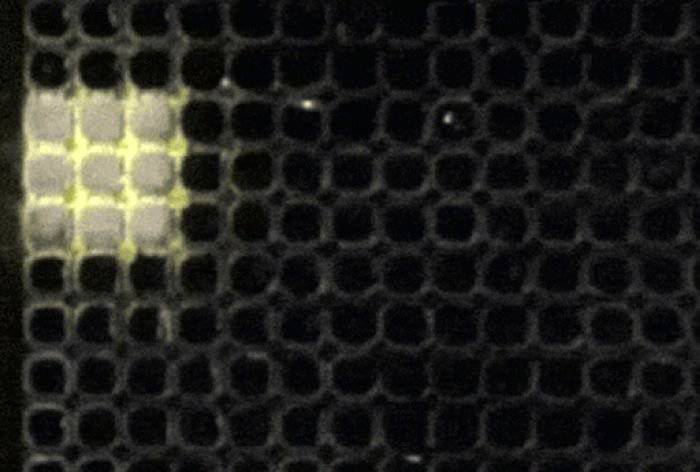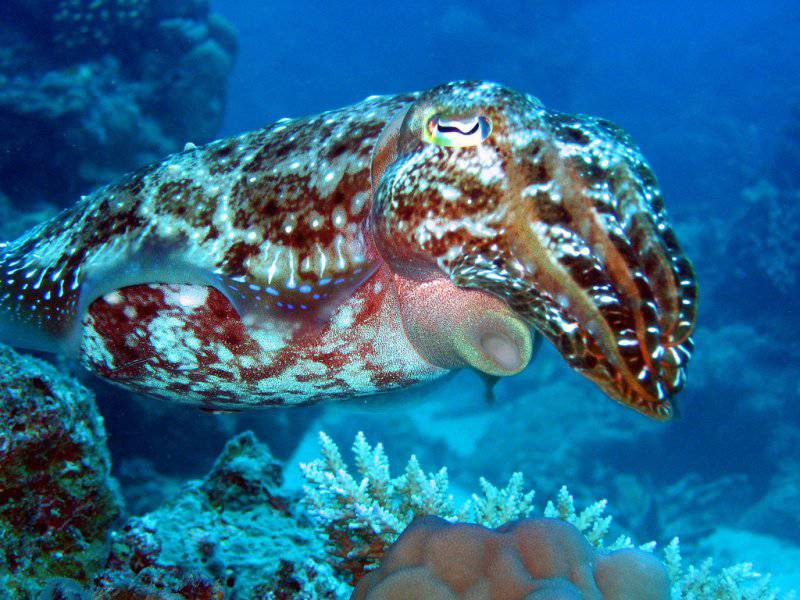The creators of military camouflage inspired natural camouflage octopus and cuttlefish
Experts chose an octopus skin model, which was taken as a basis, as a starting point for research. It is known that this cephalopod mollusk, as well as its “relative” cuttlefish, can merge with its surrounding background in a matter of seconds, easily changing its color. This became possible due to the peculiarities of the skin structure of these mollusks. Their skin consists of three different layers. The first layer of skin is used to display "warm" shades, the second is intended for "cold" colors, and the third - to scatter the incident light. It was on the basis of this natural concept with the financial support of the US Department of Defense that optoelectronic adaptive camouflage was created, which is still able to change its shade from black to light (transparent) under the influence of incident light.
A team of scientists has already presented its development to the public. Their unique material is a flexible plate consisting of a large number of cells 1 x1 mm in size, each of these cells consists of several ultrathin layers, the thickness of which does not exceed 200 microns. This device combines the work of semiconductor drives, light sensors, switches, inorganic reflectors and color-changing organic materials.
American researchers argue that the material presented by them can effectively adapt to environmental changes and is able to change its color at speeds from 1 to 2 in seconds. The first prototype created a new masking material can work in black and white colors, as well as with different shades of gray. However, in the future, technology will have to use a full range of colors. The researchers also provided the possibility of programming the plate, so that it could form a variety of black and white patterns. In order to demonstrate this ability, the abbreviation UoI - University of Illinois - appeared on the presentation of the material.
The implementation of the new technology became possible after scientists studied the masking abilities of existing cephalopods at the cellular level. A group of researchers composed of specialists in materials science, biology, electronics and computer engineering worked on the development of this plate.
It is reported that this invention may be interested in a sufficiently large circle of persons: from interior designers and clothing to law enforcement agencies. The developers themselves are sure of this. In addition to directly camouflage functions, in the army, this technology can also be used by car manufacturers. Currently, a number of companies are immediately working to create a "transparent" car. To implement this fantastic idea in practice, a video image from a variety of outdoor cameras is used, which is reproduced inside the car on the doors and in the back seat. Thanks to this, it is possible to increase the visibility of the driver and reduce the probability of small accidents.

“We were surprised at how many people came to us with different ideas on the use of the material we created,” said John Rodgers, the head of research. According to him, scientists are currently working to improve this technology. In addition to introducing new colors into it, they expect to improve the resolution of the plates created, as well as to replace the external power supply with solar panels.
It's amazing how perfect is the nature around us. Octopuses and other cephalopods living in the seas have the ability to disguise themselves on the terrain, changing the color of their skin over many thousands of years. As a result, this effect did not go unnoticed by the scientific community. Professor John Rogers notes that scientists borrowed from nature not only the idea itself, but also its implementation in the form of three different layers: the upper layer contains colors, the middle layer is responsible for changing them, and the lower layer is responsible for perceiving the environment, which must be imitated . However, the similarity of the structure of natural and human developments ends there. Specific components have a very large difference, color management occurs by changing the temperature.
Currently, the project is funded by the US Navy, in the future, other colors will be added to it besides black, but this is not yet a mandatory and urgent task. According to Rogers, the created system is still quite far from real use: the successful work of the model has been demonstrated, but still a lot of effort is needed to create real systems that could use it.

The principle of operation of innovative camouflage is the use of a flexible multi-cell type material with a multilayer structure, which is:
1. Base substrate, which reacts to light (layer No. 3), with an intermediate layer in the form of a transparent polymer material.
2. A reflective layer made of silver, under which are placed special silicon diodes. They are able to heat up when electricity passes through them (layer No. 2) and heat up the layer above No. XXNX.
3. The top layer is filled with a special heat-sensitive paint, due to the properties of this paint in the normal state, this layer has a black color, but when the temperature rises, it becomes transparent (layer No. XXUMX).
The color changing mechanism is based on the use of the following principle: as soon as light from an external source gets onto the substrate base (layer No. 3), the substrate sends the appropriate signal to pass an electric current through the set of silicon diodes of layer No. 2. This leads to the heating of the diodes, which in turn entails a regular increase in the temperature of layer No. 1. As soon as it heats up to 45 degrees Celsius, the initially black cells of the layer # 1 turn into completely transparent.
This creates a visual effect, in which the top layer supposedly turns from black to light sand, although in reality the coating becomes colorless. This is due to the fact that the light directed at the experimental protective camouflage passes unhindered through the heated cells, after which it is reflected from the coating of layer No.2 containing silver and acting as a mirror.

Despite the use of several flexible layers and the complexity of this scheme, their total thickness does not exceed the limits of 200 microns. The speed of the color transformation of this development is very high, although it has a time delay that is easily noticeable to the human eye. A new task for a group of scientists who are working on a project to create adaptive optoelectronic camouflage will be an increase in the working spectrum of colors. This will have to provide a high level of camouflage on all types of terrain. Moreover, even the researchers themselves admit that it will be very, very difficult to achieve a similar level with that which octopuses possess in nature.
Information sources:
http://www.vesti.ru/doc.html?id=1906295
http://www.3dnews.ru/900456/#53f4ede4b4182e9a598b4579
http://www.thg.ru/technews/20140820_230215.html
http://it.tut.by/412100?utm_campaign=news-feed&utm_medium=rss&utm_source=rss-it

Information